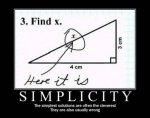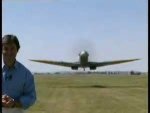To go back just a moment, the late model Spitfires/Seafires (Griffon engined) had contra-props to absorb the power. There were a LOT of handling issues with the ones fitted with the Griffon/5-blade setup, they were
not nice to less experienced pilots (and embarrassed experienced ones on occasion!).
So, everything Cannonfodder said above, plus-
The torque from a powerful engine/prop can be more than the rudder can handle at lower speeds and it will actually pull the aircraft off to the side when you apply power to take off. You have the actual engine torque to deal with, and also asymmetric slipstream along the fuselage. Basically, all that propwash is pushing one side of the aircraft (the ground effect prevents it going all the way around). Too much power and you literally cannot go straight ahead.
In addition, the contra-rotating prop allows more blade area for a given diameter, which in the case of the short landing gear Spitfire was important. The F-4U Corsair had those long legs and bent wings mainly to allow a big prop that wouldn't hit the ground (there were also some aerodynamic benefits from fitting a wing at 90* to the fuselage).
Also, shorter blades keep the tip speeds down. Having your blade tips getting into the trans-sonic region causes unpleasant issues, and if they go supersonic, you are in for some real excitement!
Basically, think of the prop as making two arcs, one at the blade bases, one at the tips. The entire blade turns about the center point at the same speed, but the hub arc is small in comparison to the tip arc. This means that the tips have a much higher relative speed than the hubs, since they have to cover more distance with each rotation. The shorter the blade, the slower the tip arc will be.
I tried to keep it simple, so is all that clear as mud?

Cheers




